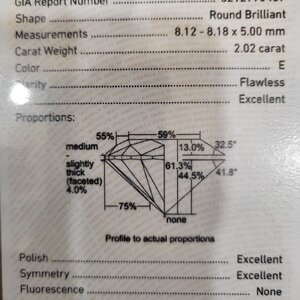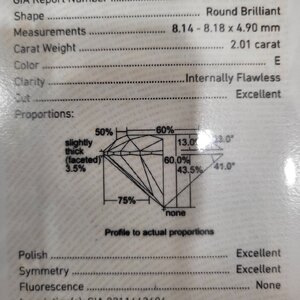- Joined
- Aug 4, 2008
- Messages
- 15,872
optical scanners google sarin scannerHow do you scan a diamond, anyway? I have laser scanners and commercial-grade photogrammetry software, but even glass gives that stuff difficulties.
optical scanners google sarin scannerHow do you scan a diamond, anyway? I have laser scanners and commercial-grade photogrammetry software, but even glass gives that stuff difficulties.
@Venzen007 ,I agree it would cost more than the current ASET, but maybe not cost prohibitive for everyone.
When you say "calibrating", what do you mean? I'd think matching the angles and color proportions of the interior cone to those of the current ASET's interior cone would be easy. The engineering would just be from the interior wall of the cone out, where the lighting would be housed. A thick enough colored section of material with uniform diode placements to illuminate it doesn't seem difficult in theory.
I just wonder whether such a device would still give us the various color gradients of our individuals colors or whether the colors reflected would be more standard, red, blue, green. Plus, what would happen if you turned off the Red and left on the Green, or vice versa; I just think those results would be interesting to see and then explain, but maybe all that stuff has already been worked out some other way.
Buy a diamcalc license and do it virtually on an a huge variety of proportions cuts and materials.@gm89uk , I understand what the backlight does for the image. My thought wasn't to replace the current device with a better device for the same purpose, but to imagine something with which I could experiment to see how adjusting the intensity of the different colored lights or turning one off all together might affect the resulting ASET image. Again, for my curiosity and personal understanding of the subject.
lol yea they are pricey.I see there's a significant price difference between 3.3 and 3.3 pro? No doubt the Pro edition is way overkill for someone like me, but I'm sure the regular edition has enough fuctionality to be worth its price?
I took a look at the price of the Helium Polish scanner and unless I change professions, it's cost prohibitive. Heh.
The photos have to be taken straight on @sambanh (not at an angle). The first one looks like it is at an angle and if the second
one is straight on then its not a well-cut stone (or something else is wrong).
Please provide a copy of the reports for the stones


@tyty333 the last 2 new ASET images are of the 1st stone. The first stone is the FL stone and the 2nd stone is IF stone
Please start a new thread for help. I dont think either stone is well cut unfortunately
The first image the diamond would fail HCA.
There is visible leakage around the outer edges of the table.
Also with such a deep pavilion angle the dead center may not have a lot of scintillation.
The second stone - the ASET is far too close - unless the stone is heavily painted and it would be good to see a fresh photo.
